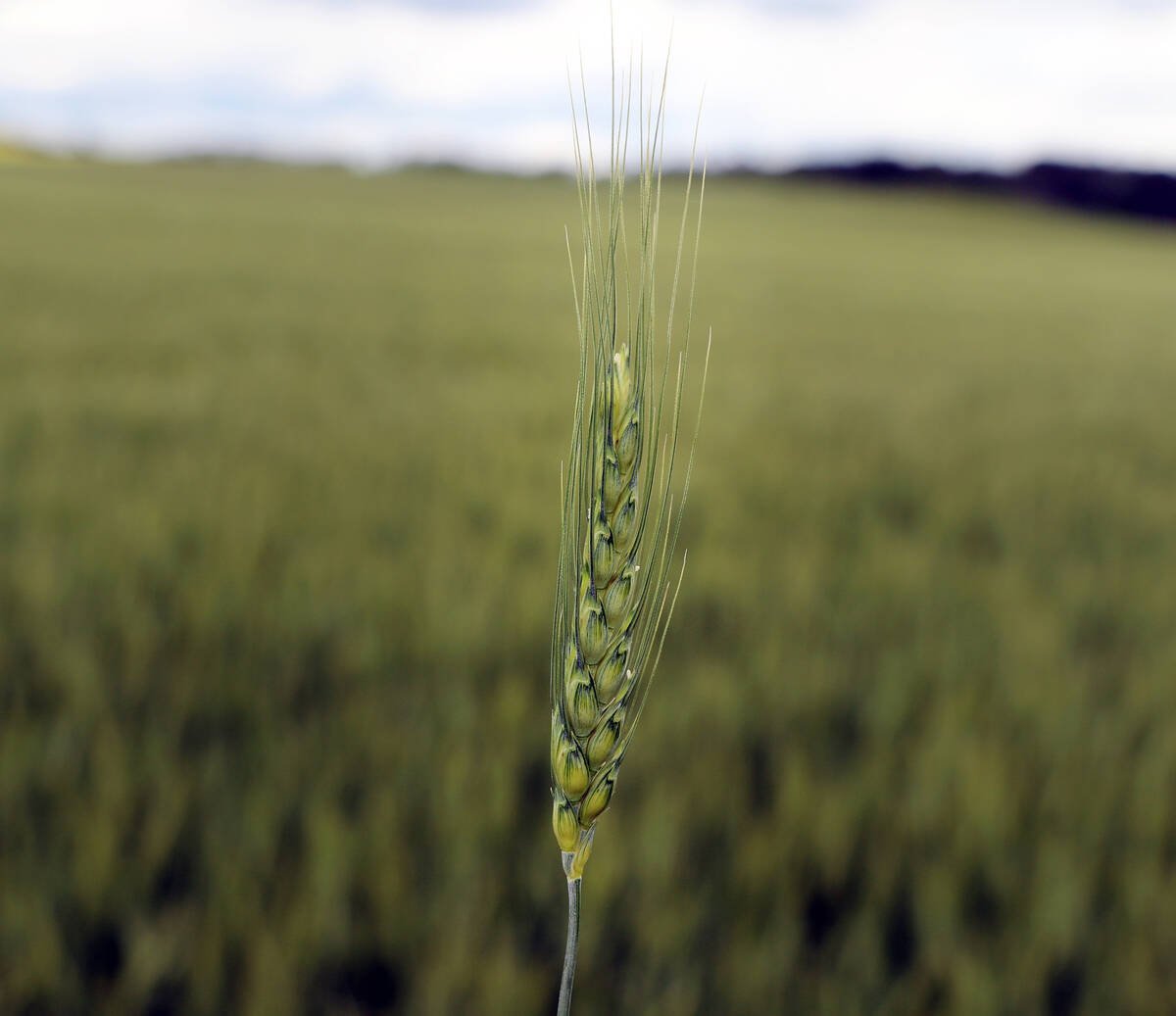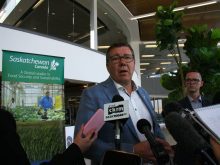HAGEN, Sask. – Last fall’s late harvest was a pain in the neck for many prairie farmers, but doubly so for Dave Newhouse.
The 52-year-old out-of-shape grain farmer from Hagen was planning to run his first marathon the following March and needed to start intensive training on Nov. 1. However, he didn’t climb off the combine for the last time until Nov. 15 and didn’t start training until Nov. 17.
“I was playing catchup, which was hard.”
He persevered, spending his winter huffing and puffing up and down the snowy gravel roads that surround his farm, sometimes in -30 C weather.
Read Also

Wheat markets are under duress
Two of Canada’s top wheat buyers have agreed to significantly ramp up their purchases from the United States.
In March, he flew to Rome with the goal of running the 42 kilometre race in six hours. He finished in five hours, 59 minutes and 25 seconds.
“I’m kind of like a Clydesdale out there, but I did it.”
Newhouse’s run through the streets of Rome began the previous winter when he was diagnosed with Type 2 diabetes. He needed to lose weight to control the disease and decided running a marathon as part of the Canadian Diabetes Association’s fundraising effort would be good motivation. He raised $5,500 from his neighbours and farm suppliers and prepared himself for serious training.
He had participated in cross country skiing marathons when he was younger, so was no stranger to being in shape. This time around, he looked for help in a book, John Stanton’s Running Start to Finish, which outlined a four-month training program.
Despite starting 21/2 weeks late,
Newhouse worked hard and soon caught up. On Boxing Day he ran 21 km along the Bow River in Calgary.
He ran 900 km over those four months and wore out two pairs of running shoes.
He once logged 22 km on the treadmill, which allowed him to watch two movies.
“That’s a long time to be on a treadmill,” he said. “But it’s kind of like farming. Run real hard and stay in one spot.”
A few times during the winter he travelled to Saskatoon and ran on the trails that border both sides of the South Saskatchewan River, which he said wasn’t nearly as cold as it was running on the flat, treeless prairie back home.
While a lack of suitable running facilities was one of the disadvantages to training on the farm, more problematic was the lack of running mates. While Saskatoon members of the diabetes association team could train together,
Newhouse was forced to run by himself through the winter countryside.
He’s hoping this will change with the recent formation of a running club in nearby Birch Hills, Sask., for which he’s suggested the motto: “Come out and run around with your neighbour’s wife.”
He said running the marathon wasn’t a bad experience: “By following the training, the marathon was pretty easy to run. It was just like another training run.”
Running it in Rome was incredible: “Starting the marathon at the Coliseum and finishing it there was a real treat,” he said, He also had a glimpse of St. Peter’s Basilica during the race.
A team photograph taken the day before the race on the stairs of an old church erupted into a rendition of O Canada.
“That kind of choked me up.”
He enjoyed the experience so much that he plans to run another diabetes fundraiser in New Orleans in February and will need to start training in earnest by Oct. 1. This time the weather had better co-operate.
“Combining be damned,” he said. “I’ll start running then.”
While marathoning seems to have got into his blood, Newhouse is not sure he’ll do many more fundraisers. He’s attracted to the lifestyle he was introduced to by an older couple from Georgia who he met in Rome. They run marathons around the world as a way to combine their retirement passions of running and travel.
He would be interested in that and will revisit it in six years when his wife Sandra is able to retire as unit manager of the operating room at the hospital in Prince Albert, Sask.
“I’ll still farm,” he said. “But maybe not as intensely.”
For now, he’ll continue to train, mainly in the winter but also as much as he can during the summer.
Part of it, he thinks, is a moral responsibility to take care of himself as much as possible.
“With health-care costs rising, so much stuff is preventable by our own actions. We can’t just sit and drink beer and eat doughnuts and then expect society to take care of us. You’ve got to accept some of the responsibility in your hands, I think.”
He said the training was also good for his mental health.
“The training sure took my mind off the stress of farming last year. You get out and run and you think about other things than the serious problems in farming.”
He also hopes he can be an inspiration to others.
“I hope people get inspired to do it if a pot bellied farmer like me can.”














